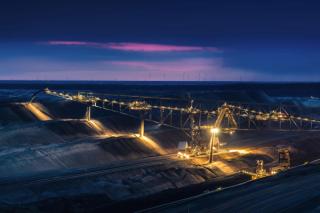
Cultural heritage: Indigenous and cultural heritage values driving sustainable development
by Flavia Kiperman
View post

Why sustainable development and infrastructure should be at the core of global society
As the UN Sustainable Development goals aspire to deliver the ‘development of quality, reliable, sustainable, and resilient infrastructure’, it is evident that on a global level, there is an imperative to react now to future-proof our cities and regions.
Equally, as countries around the world are setting individual targets in this area, such as the UK’s Net Zero 2050 Target, we are seeing a rapid shift in customer preferences and investor sentiment. This momentum is driving increased investment into Sustainable Development and Infrastructure (SDI) solutions across both the public and private sectors.
What is sustainable development and infrastructure (SDI)?
Sustainable infrastructure involves developing roads, buildings, energy, water, and waste infrastructure with due consideration for economic implications, as well as for ESG (Environment, Social and Governance) factors.
The International Institute for Sustainable Development (IISD) defines sustainable infrastructure assets as those which:
There are many different sectors that can and should apply sustainable thinking as a core principle in their development and delivery, including:
From the list above it is clear that SDI should increasingly pervade all aspects of the built environment and infrastructure. It is at the core of how we live and grow as a global society.
What are the advantages of sustainable infrastructure?
In short, delivery of SDI creates a better, more efficient, more integrated, and inclusive, world. Some specific examples of the advantages are set out below, but it is by no means an exhaustive list:
A key feature of SDI is the integration of economic, environmental, and social thinking to ensure delivery of our roads, railways, energy, cities, and natural environment can co-exist now and long into the future.
What do businesses need to do?
Sustainable infrastructure solutions are no longer a source of competitive advantage and those who ‘lag’ will cease to exist. SLR has for many years worked collaboratively with other stakeholders to deliver SDI thinking for our clients, from sustainable transport, to tourism masterplanning, to green finance. We’re always happy to discuss a project – please get in touch to find out more.

by Flavia Kiperman

by Jasper Schrijvers , Matthew Hoare

by Clodagh Connolly, Nicola Inge, Andres Schottlaender